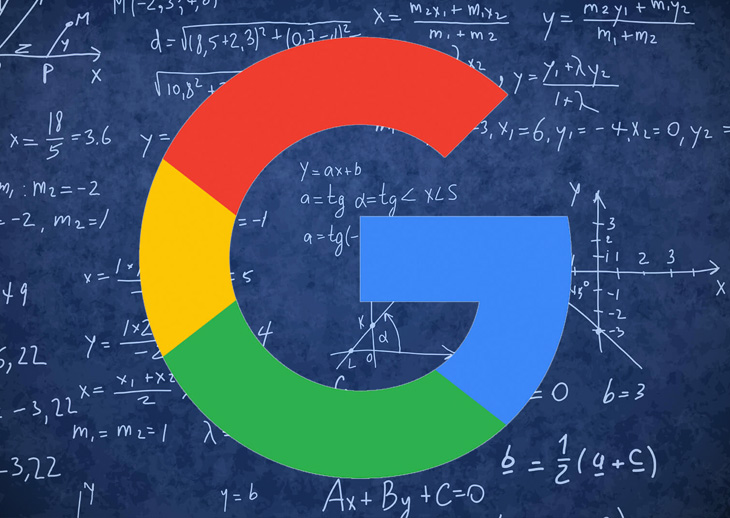Why Image Optimisation is Crucial for SEO Growth?
At a glance:
- Optimised images boost website performance, leading to better user experience and SEO rankings.
- Search engines favour websites with optimised images, as they help with faster page load times.
- Image relevance, Alt text, and mobile optimisation are essential for a strong SEO strategy.
In today’s digital age, having a website is no longer just a luxury—it’s a necessity for businesses, entrepreneurs, and even personal brands. Whether your goal is to grow your business, build your reputation, or showcase your portfolio, a well-designed and optimised website is essential for standing out in an increasingly competitive online space.
One of the most overlooked, yet critical aspects of website success is image optimisation. While images enhance the visual appeal of a site and improve engagement, they can also hinder your website’s performance if not optimised correctly. In fact, slow-loading websites can drive visitors away and negatively impact your search engine rankings.
In this article, we’ll explore why image optimisation is crucial for SEO growth. Also, how it impacts search engine rankings and the long-term benefits of keeping your website optimised for both users and search engines. By the end of this article, you’ll understand the importance of properly managing images on your site and how this can drive SEO success.
Why Are Images Important for a Website?
Images are a key component of most websites because they capture attention, evoke emotions, and make content more engaging. For many businesses, images are used to showcase products, highlight services, or communicate brand values. Without images, websites would rely solely on text, which often fails to grab the attention of users in a fast-paced, visual-driven world.
However, the role of images extends far beyond aesthetics. High-quality, well-placed images can significantly enhance the user experience by making content more understandable and relatable.
For instance, product images on an e-commerce site provide essential details that help users make informed buying decisions. Similarly, infographics or diagrams on a blog can simplify complex concepts.
Despite the clear importance of images, large, unoptimised files can have detrimental effects on website performance, leading to slow load times, increased bounce rates, and reduced engagement. This is why image optimisation is critical—not just for the user experience but also for your website’s SEO growth.
What is Image Optimisation?
Image optimisation is the process of reducing the file size of an image without sacrificing its quality. The goal is to strike a balance between maintaining the visual appeal of an image and ensuring that it doesn’t slow down your website. By optimising images, you can improve website performance, resulting in faster page loading times, better search engine rankings, and a more enjoyable user experience.
Techniques Involved in Image Optimisation
There are several techniques that can be used to optimise images, and the right approach depends on the type of image, the file format, and the overall design of your website. Some common methods include:
- Resizing Images: Adjusting the dimensions of an image to fit your website’s layout.
- Compressing Images: Reducing the file size without losing noticeable quality.
- Choosing the Correct File Format: Different formats, such as JPEG, PNG, and WEBP, offer different advantages depending on the image’s purpose.
- Lazy Loading: Ensuring images load only when a user scrolls down to them, preventing unnecessary delays in the initial page load.
By incorporating these techniques into your website, you’ll be able to provide users with a seamless experience while improving your website’s SEO performance.
Importance of Image Optimisation for SEO
Impact on Search Engine Rankings
Search engines like Google place a high emphasis on page speed when determining search rankings. A website that loads quickly is more likely to rank higher in search results than a slow-loading site. Since images often account for a large portion of a website’s data, optimising them can have a significant impact on your overall page speed, which in turn improves your SEO.
Search engines also index images, meaning optimised images can appear in image search results. This not only improves your site’s visibility but can drive additional traffic directly from image searches. By ensuring your images are optimised, you can increase the likelihood of being found by both search engines and users.
Example: If an e-commerce site uses unoptimised, large product images, it may take several seconds to load, causing users to leave before they even see the products. Search engines will notice this high bounce rate, which may lower the site’s ranking, making it harder for customers to find the site in future searches.
Improving User Experience
User experience is another major factor that impacts search engine rankings. Search engines favour websites that provide fast, smooth, and engaging user experiences because they signal that the site meets the needs of its audience. Slow websites, on the other hand, tend to frustrate users, leading to high bounce rates.
By optimising images, you reduce the load time of your website, making it more responsive and user-friendly. Visitors are more likely to stay on your site and engage with your content if they don’t have to wait for images to load. As a result, a fast, well-optimised website leads to better user engagement, lower bounce rates, and improved SEO performance.
Relevance of Images to Content
Significance of Image Relevance
It’s not just about having optimised images—it’s also crucial that the images you use are relevant to your content. Search engines look for context when crawling websites, and pictures that align with the text on the page are more likely to be seen as valuable.
For example, if your website is about fitness, using images related to exercise, nutrition, or wellness will help search engines understand the topic of your page. Conversely, irrelevant or random images can confuse search engines, leading to lower rankings and reduced traffic.
Using Descriptive File Names and Alt Text
To maximise the SEO benefits of your images, you should always use descriptive file names and alt text. Search engines can’t “see” images in the same way humans can, so they rely on text to understand what an image represents. Descriptive file names and alt text provide context for the image, helping search engines index it correctly.
Example: Instead of uploading an image with a file name like “IMG1234.jpg,” rename it to something more descriptive like “woman-running-on-treadmill.jpg.” For the Alt text, use a clear and concise description, such as “A woman running on a treadmill in a fitness centre.”
This simple step not only helps with SEO but also improves accessibility for users who rely on screen readers to interpret website content.
Mobile Optimisation for Images
Importance of Mobile Optimisation
With more users accessing websites from mobile devices than ever before, mobile optimisation has become a crucial aspect of SEO. Google prioritises mobile-friendly websites in its rankings, and one of the key elements of mobile optimisation is ensuring images are properly resized and compressed for smaller screens.
Large, unoptimised images can be particularly problematic on mobile devices, where slower networks can exacerbate load times. By optimising images specifically for mobile users, you not only improve the user experience but also enhance your SEO performance on mobile search results.
Mobile-optimised images are generally smaller, and responsive design techniques are used to ensure they display correctly on any screen size. This ensures your website is accessible and fast, no matter what device a user is browsing from.
Get Expert SEO Assistance with ATM
Optimising your images is just one piece of the SEO puzzle. For a comprehensive strategy that drives long-term results, consider partnering with experts. At Anxious To Matter, we specialise in all aspects of SEO, from image optimisation to technical SEO audits. We’ll work closely with you to ensure your website is fully optimised for growth and success.
Ready to take your website’s SEO to the next level?
Contact ATM today and let us help you unlock your website’s full potential. Call us now or visit our website to learn more about our expert SEO services.
In conclusion, image optimisation is an essential factor for driving SEO growth and improving user experience. By reducing image file sizes and ensuring they are relevant and optimised for both desktop and mobile users, you can significantly improve your website’s performance and ranking in search engine results.
Optimised images lead to faster page load times, reduced bounce rates, and better user engagement, all of which are critical for a successful SEO strategy. Additionally, using descriptive file names and alt text can help search engines understand your images, driving more traffic from both standard and image searches.
Enquire Today
Melbourne Head Office
Suite 38 Level 7/570 St Kilda Rd, Melbourne VIC 3004, Australia
Phone: 1300 780 471
Email: [email protected]








